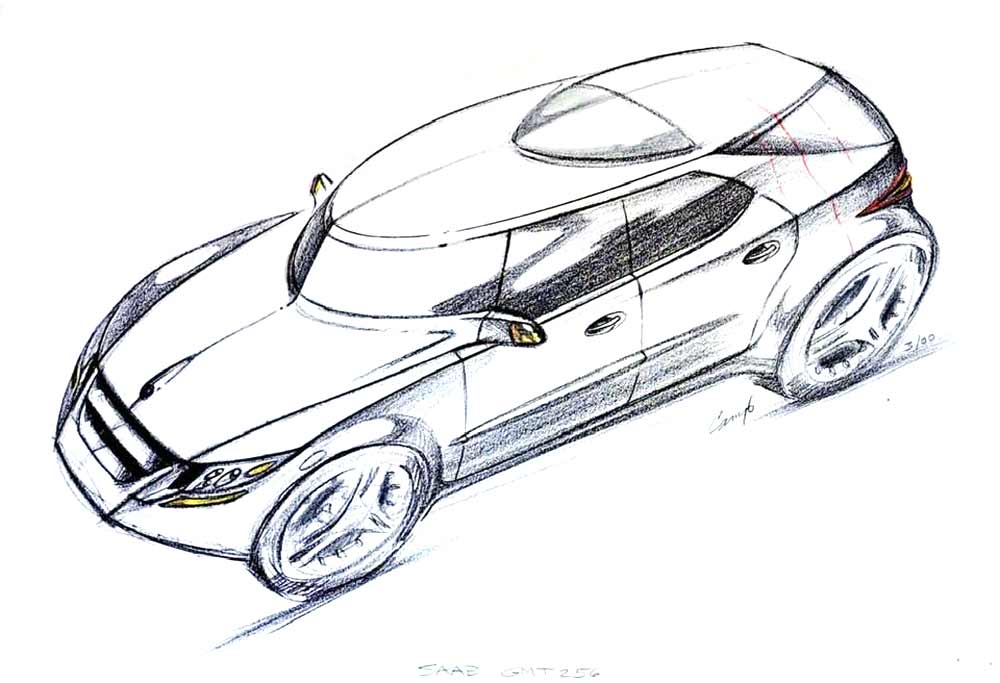In the early 2000s, the automotive landscape was witnessing a significant shift. SUVs were rapidly becoming the vehicle of choice for many consumers, blending the comfort of passenger cars with the rugged appeal of off-road vehicles.
This was a trend that Saab, under the ownership of General Motors (GM), couldn’t afford to ignore. Amidst this backdrop, Saab embarked on an ambitious project to develop its first-ever SUV, codenamed GMT256. Despite the potential it held, the GMT256 never reached production, remaining a fascinating ‘what could have been’ in automotive history.
Table of Contents
The Vision of GMT256
The GMT256 was conceived at a time when Saab, known for its quirky and innovative cars, was struggling to expand its market reach. GM’s plan was to infuse Saab’s distinctiveness into the burgeoning SUV market. The idea was to create a vehicle that would combine Saab’s traditional strengths – safety, turbocharging, and a unique design ethos – with the practicality and appeal of an SUV.
Design and Platform
The GMT256 was to be based on the same platform as the Pontiac Aztek and Buick Rendezvous – a decision that was both practical and strategic for GM. This platform was derived from the Chevrolet Venture/Pontiac Montana/Oldsmobile Silhouette minivans, offering the necessary versatility and size. Saab’s version was expected to inherit the larger structure of the Rendezvous, which was longer than the Aztek and could accommodate a third row of seats.

George Camp: Mastermind Behind GM’s Iconic Designs
In terms of design, the GMT256 was slated to carry Saab’s signature elements, such as narrow fixed headlights and a horizontally split, chrome-rimmed grille. The aim was to ensure that, despite its shared underpinnings, the GMT256 would be distinctively a Saab.
George Camp, a remarkably talented designer, played a pivotal role at GM Design from 1963 to 2001. During his extensive career, he contributed to an array of projects that spanned from muscle cars to luxury vehicles and advanced design concepts. Known for his innovative approach and meticulous attention to detail, Camp’s work significantly influenced the automotive industry.

His involvement in the conceptualization of vehicles like the Saab GMT256 SUV showcased his ability to blend functionality with aesthetic appeal, making him a key figure in shaping the visual language of numerous iconic GM vehicles. Camp’s legacy in automotive design is marked by a deep understanding of vehicle architecture and a unique flair that has left an enduring impact on the industry.
Engine and Performance
Under the hood, the GMT256 was expected to diverge from its GM cousins. Saab planned to install a more powerful engine, likely the Opel-based 3.0-liter turbo V-6, which was already being used in the Saab 9-5 SE. This choice was in line with Saab’s heritage of turbocharging and would have given the GMT256 a performance edge over the Aztek and Rendezvous.
Market Positioning and Potential
Saab’s foray into the SUV market was not just about expanding its product line; it was about survival and relevance in an evolving market. Competitors like Lexus with the RX 300 and BMW with the X5 were already establishing strong footholds in the luxury SUV segment. Saab’s GMT256 was envisioned as a contender in this space, potentially becoming the brand’s first product sold exclusively in North America.
This strategic move was seen as essential for Saab to maintain its relevance, particularly in the American market, where SUVs were gaining unprecedented popularity. The GMT256 was to fill the gap between traditional cars and trucks, targeting consumers looking for a blend of luxury, performance, and practicality.
Challenges and Cancellation
However, the journey from concept to production is fraught with challenges, and the GMT256 was no exception. One of the primary issues was ensuring that the GMT256 remained true to Saab’s ethos while sharing a platform with less premium GM models. Additionally, integrating Saab’s engine into the GM platform posed its own set of engineering challenges.
Moreover, the financial health of Saab under GM’s stewardship was a constant concern. Investments in new models like the GMT256 had to be weighed against the backdrop of Saab’s overall profitability and strategic fit within GM’s portfolio.
In the end, these challenges, combined with shifting priorities within GM, led to the cancellation of the GMT256 project. Saab would eventually release the 9-7X and 9-4X SUVs, but the GMT256, which could have been Saab’s pioneering entry into the SUV market, remained a dream.
Legacy and What Could Have Been
The story of the GMT256 is more than a tale of a car that never was; it’s a window into a pivotal moment in automotive history and a testament to Saab’s innovative spirit. Had it reached production, the GMT256 might have altered the trajectory of Saab’s fortunes, providing a much-needed boost in a highly competitive market.
In retrospect, the GMT256 represents a missed opportunity for Saab and GM. It highlights the challenges automakers face in balancing brand identity with market demands, especially when operating under the umbrella of a larger corporate entity. The GMT256 project’s cancellation also underscores the delicate balance between innovation, practicality, and economic viability in the automotive industry.
Today, as we look back, the GMT256 stands as a symbol of what could have been – a unique blend of Saab’s design and engineering prowess adapted to the burgeoning SUV market. Its story is a poignant reminder of the unpredictable nature of the automotive world, where not every vision reaches fruition, but every attempt lays the groundwork for future endeavors.












The Aztek was ugly, and reviled, but the Buick was well received, and sold well. A Saab version….done right…..could have hit the mark that the “Trollblazer” 9-7X missed!
Too much of a “me too “strategy. SAAB could not and never will be al things to all people. You either love them or hate them. Unfortunately the numbers weren’t in their favour. I would still buy another (if they were available) based on my experience (still on my 4th!) with the brand
Somehow I’m glad Saab disappeared so it didn’t have to come up with yet another obese SUV.